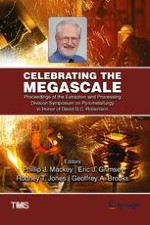2016 | Book
Celebrating the Megascale
Proceedings of the Extraction and Processing Division Symposium on Pyrometallurgy in Honor of David G.C. Robertson
Editors: Phillip J. Mackey, Eric J. Grimsey, Rodney T. Jones, Geoffrey A. Brooks
Publisher: Springer International Publishing
